As software development teams strive to ensure their applications deliver optimal performance under various conditions, the demand for reliable and robust load-testing solutions will grow significantly in 2024. For launching a new app or scaling an existing system, choosing the right load-testing tool is crucial to identify bottlenecks and ensure seamless user experiences. Ensuring a consistent user experience requires thorough performance and load testing. In this review, we explore the 16 best load-testing tools of 2024, offering insights into their features, strengths, and ideal use cases so that you can make an informed decision for your next project.
📌 Why read this blog?
- An in-depth review of the top 16 load testing tools for 2024, including their key features, strengths, and ideal use cases.
- Comprehensive guidance on how to choose the right load-testing tool for your specific needs, whether you're focusing on web applications, APIs, or mobile apps.
- Best practices for effective load testing to ensure your applications can handle peak traffic, maintain performance, and provide a seamless user experience.
📌 What you'll discover:
- To stay ahead of the curve by understanding the latest and most effective load testing tools available in 2024.
- To gain valuable knowledge on how to optimize your application's performance and scalability through strategic load testing.
- Ensure you're equipped with the right tools and practices to prevent performance bottlenecks, reduce downtime, and improve user satisfaction.
- To explore future trends in load testing and prepare your systems for the next wave of technological advancements.
Best Load Testing Tools
In today's fast-paced digital environment, ensuring your applications can handle high volumes of traffic is critical to maintaining performance and user satisfaction.
Performance measurement: Evaluates system behavior under expected and peak user loads, identifying performance bottlenecks and capacity limits.
Scalability assessment: Determines how well the system scales when the user load increases, ensuring it can handle growth.
Stability under stress: Tests the system’s reliability by simulating high traffic over extended periods, revealing issues like memory leaks or server crashes.
In this guide, we highlight some of the top load testing tools available, each offering unique features to help you optimize performance, scale effectively, and deliver a seamless user experience across your applications:
- Apache JMeter: A popular open-source tool that supports testing on a variety of protocols, making it a versatile choice for web application load testing.
- LoadRunner: A comprehensive enterprise-grade tool from Micro Focus, offering extensive protocol support and advanced analytics for in-depth performance analysis.
- BlazeMeter: A cloud-based tool that simplifies large-scale load testing, offering seamless integration with Apache JMeter and real-time reporting.

These tools, among others, will equip you with the insights needed to ensure your systems can handle peak traffic, maintain performance, and provide a smooth user experience even under the most demanding conditions.
Why Load Testing is Crucial for Application Performance
Load testing is a critical aspect of ensuring application performance, where user expectations are higher than ever. Here's why load testing is crucial:
- Identifies Performance Bottlenecks: Load testing helps pinpoint areas where your application may struggle under heavy traffic. By simulating real-world conditions, it reveals slow response times, system crashes, and other issues that could disrupt the user experience.
Identifying performance issues early helps prevent critical system failures. Thorough testing web applications identifies bugs and performance issues early.
- Ensures Scalability: As your user base grows, your application must scale to handle increased demand. Load testing ensures that your infrastructure can accommodate growth without compromising performance, helping you avoid costly downtimes.
- Improves User Experience: Slow or unresponsive applications drive users away. Load testing allows you to optimize your application’s performance, ensuring it remains fast and responsive even during peak usage, which is key to maintaining user satisfaction and retention.
Regularly testing for performance issues minimizes downtime and boosts reliability. Addressing performance issues proactively ensures a smoother user experience.
- Prevents Downtime: Downtime during critical business operations can lead to significant revenue losses and damage to your brand's reputation. Load testing helps you identify and address potential points of failure before they impact your users, ensuring your application remains available and reliable. Effective stress testing reveals how systems handle excessive loads and failures.
- Validates Infrastructure Changes: When making changes to your infrastructure, such as deploying new servers or moving to the cloud, load testing ensures that these modifications will support your application’s performance requirements under load.
Continuous testing ensures ongoing performance validation in agile development cycles. Regular updates to software applications improve performance and security.

Top 16 Load Testing Tools to Consider in 2024
- Apache JMeter: Apache JMeter is a popular, open-source load-testing tool that has been a staple in the industry for years. It's known for its flexibility, supporting a wide range of protocols, and offering extensive customization through plugins. JMeter is ideal for testing the performance of web applications, databases, FTP servers, and more.
- Gatling: Another open-source tool focused on performance testing for web applications. It offers high scalability and detailed reports.
- LoadRunner: A premium tool from Micro Focus, LoadRunner is one of the most established and comprehensive load testing tools available.
- K6: A modern, open-source load testing tool that allows writing tests in JavaScript. It is widely recognized for its ease of use and high efficiency.
- Locust: An open-source tool that enables writing load tests in Python, allowing for scalable testing scenarios.
- BlazeMeter: A SaaS-based tool that provides cloud-based performance and load testing. It’s compatible with JMeter scripts.
- Artillery: An open-source performance testing toolkit for modern web applications, providing support for HTTP, WebSocket, and Socket.io.
- NeoLoad: Developed by Neotys, NeoLoad is a comprehensive performance testing tool with strong cloud integration and CI/CD support.
- Taurus: An open-source automation-friendly framework that provides a unified interface over existing load testing tools like JMeter, Gatling, and others.
- Apica LoadTest: A cloud-based load testing service that provides detailed insights into performance and scalability.
- LoadView: A fully managed load testing tool that allows testing from the cloud with real browsers for the most accurate results.
- WebLOAD: A powerful tool for enterprise load testing, supporting a wide range of protocols and technologies.
- Flood IO: A cloud-based tool that integrates with JMeter, Gatling, and Selenium, offering easy scalability for large load tests.
- RedLine13: A cost-effective load testing service that runs JMeter, Gatling, and other tools at scale on the cloud.
- OctoPerf: A SaaS-based load and performance testing tool that combines ease of use with detailed performance analytics.
- SmartMeter.io: An alternative to JMeter, providing advanced reporting, distributed testing, and support for CI/CD pipelines.

Best API Load Testing Tools for Your Needs
When testing APIs, it’s essential to choose load-testing tools that are specifically designed to handle API requests and responses efficiently. Functional testing ensures that software features work as intended. Effective functional testing helps identify bugs and improve usability. The right tool will help you ensure your APIs can handle the expected load, perform reliably, and meet performance benchmarks. Performance Testing Tools are essential for evaluating system performance. Advanced features enhance the capabilities of load-testing tools. Leveraging advanced features can provide deeper insights into system performance. Here are some of the best API load-testing tools to consider for your needs:
1. Postman
Overview: Postman is widely known as an API development environment, but it also offers load-testing capabilities. With Postman, you can create, manage, and automate API tests, making it a great choice for developers and testers who need a versatile tool.
- Key Features:
- Easy-to-Use Interface: Simplifies the process of building and running API tests.
- Newman: A command-line companion for Postman that allows for CI/CD integration, enabling automated API testing.
- Collections: Organize and execute test cases in collections, making it easier to manage large test suites.
- Detailed Reporting: Provides comprehensive reports with insights into API performance.
- Ideal For: Developers and testers looking for a tool that integrates API development and testing in one platform.

2. K6
Overview: K6 is a modern, developer-centric load-testing tool for APIs and microservices. It’s designed for ease of use, with a focus on speed and efficiency, making it ideal for continuous load testing in CI/CD pipelines.
- Key Features:
- JavaScript-based Scripting: Use JavaScript to create test scripts, making it accessible for developers familiar with the language.
- Scalability: Handles high-load scenarios with ease, simulating thousands of virtual users.
- Cloud Execution: K6 Cloud allows you to run tests from multiple locations worldwide, providing a global perspective on API performance.
- Real-time Metrics: Offers real-time performance metrics during tests, enabling quick identification of issues.
- Ideal For: Agile teams and developers who need a fast, scalable tool for continuous load testing.
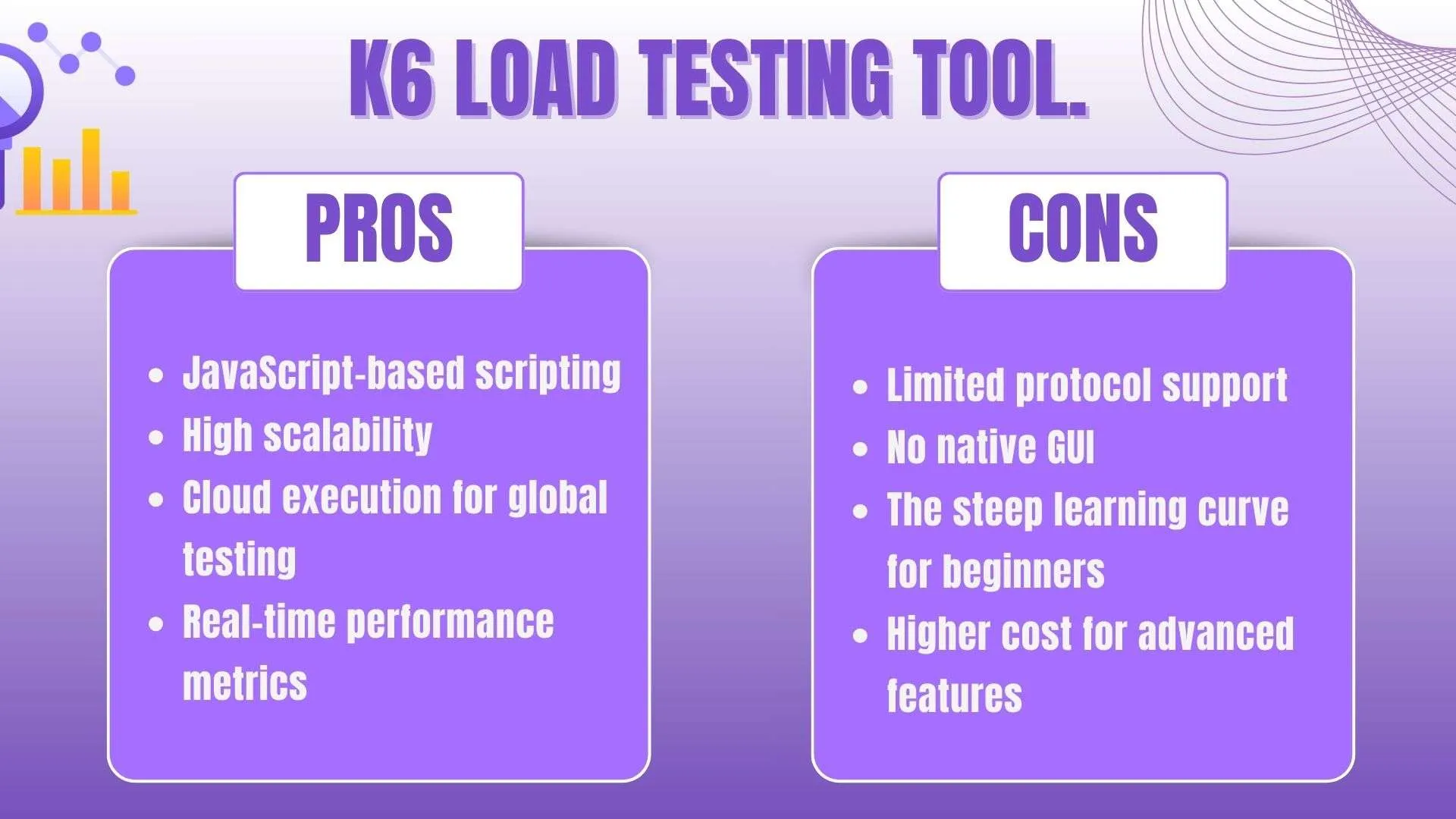
3. Apache JMeter
Overview: While JMeter is often associated with web application testing, it’s also a powerful tool for API load testing. JMeter supports a wide range of protocols and is highly extensible, making it a popular choice for testing REST and SOAP APIs.
- Key Features:
- Protocol Support: Works well with REST, SOAP, and other API protocols.
- Thread Groups: Simulate multiple users accessing the API simultaneously to test its performance under load.
- Customizable: Extensive plugin support allows you to tailor JMeter to your specific testing needs.
- Comprehensive Reporting: Generate detailed reports with graphs and tables to analyze API performance.
- Ideal For: Testers who need a versatile, open-source tool for API load testing.

4. BlazeMeter
Overview: BlazeMeter is a cloud-based load-testing platform that integrates seamlessly with JMeter, making it easy to run large-scale API tests. It’s designed to test the performance of APIs under various load conditions.
- Key Features:
- Easy JMeter Integration: Import JMeter test scripts directly into BlazeMeter for enhanced load-testing capabilities.
- Global Test Execution: Run tests from multiple locations globally, providing insights into API performance across different regions.
- Scalability: Capable of simulating millions of users, making it suitable for testing high-traffic APIs.
- Real-time Reporting: Offers real-time reporting and analytics, with the ability to share results with your team.
- Ideal For: Organizations needing to conduct large-scale API tests with cloud-based flexibility.
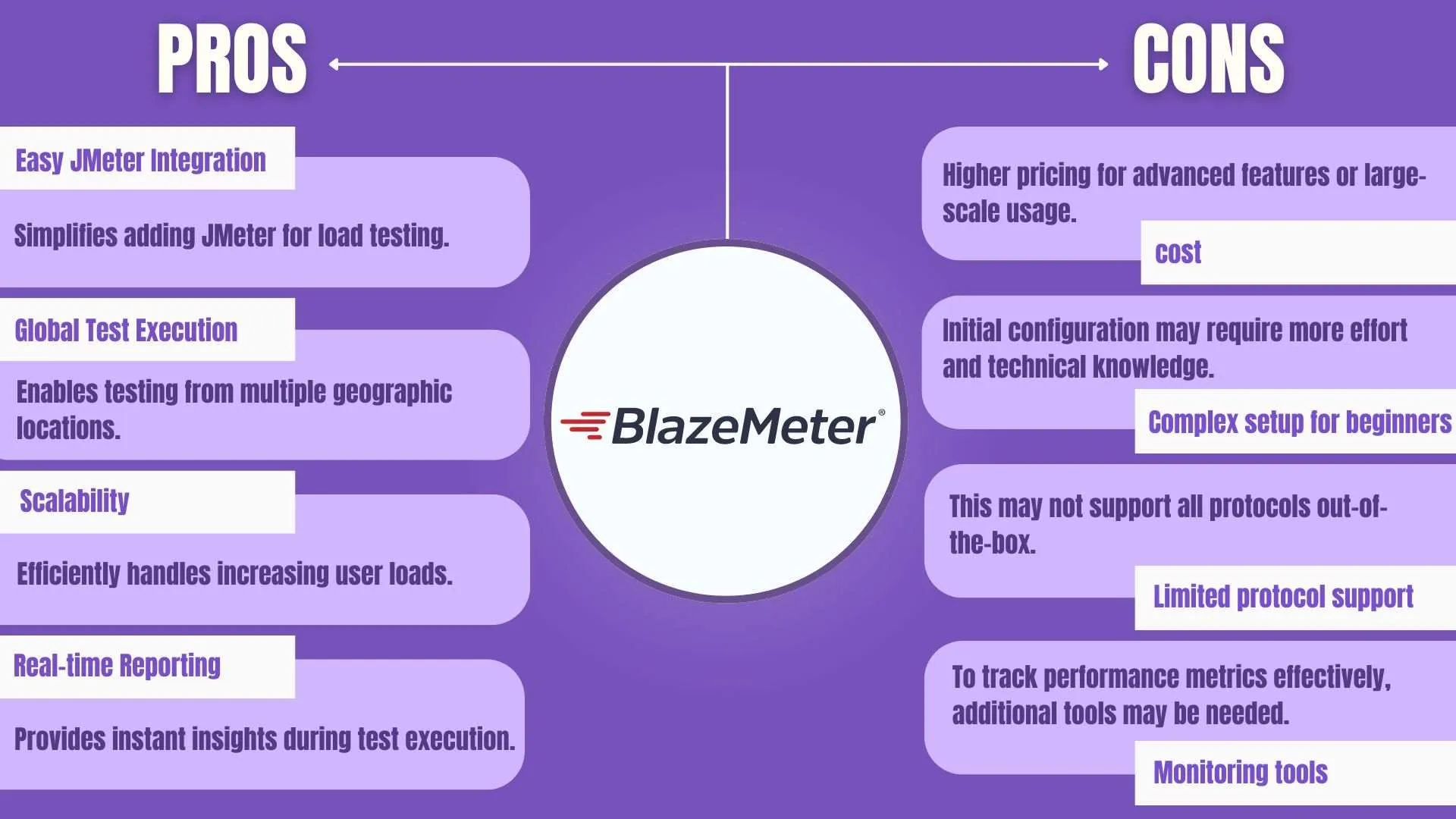
How to Choose the Right Load Testing Tool for Your Needs
Selecting the right load-testing tool can be a daunting task, especially with so many options available. Below are several crucial aspects to assist you in making an informed choice:
- Scalability: Consider the scale of your application and how many users you need to simulate. Tools like LoadRunner, NeoLoad, and Apache JMeter are known for their ability to handle large-scale tests.
- Ease of Use: If your team prefers a more straightforward setup, tools like LoadNinja, BlazeMeter, or k6 offer user-friendly interfaces and minimal scripting requirements.
- Integration with CI/CD: For teams practicing DevOps, it's essential to choose a tool that integrates seamlessly with your CI/CD pipeline. Tools like BlazeMeter, Artillery, and Taurus are designed with CI/CD integration in mind.
- Protocol Support: Different tools support different protocols. Make sure to choose one that aligns with your testing needs. For example, Apache JMeter and Tsung support a wide variety of protocols, while k6 is optimized for API testing.
- Cost: Budget is always a consideration. Open-source tools like Locust, Apache JMeter, and K6 offer powerful features without the price tag, while enterprise solutions like LoadRunner, Silk Performer, and Apica LoadTest come with more extensive support and advanced features.
By considering these factors, you can select a load-testing tool that not only meets your technical requirements but also fits seamlessly into your development workflow.
The right tool will help you ensure that your application can handle real-world traffic and provide a smooth user experience, even under peak load conditions.

JMeter: Features, Advantages, and Best Practices
As one of the most popular open-source tools, Apache JMeter is extensively used for load and performance testing. Developed by the Apache Software Foundation, it allows you to test the performance of various services, including web applications, databases, and FTP servers. In this blog, we’ll explore JMeter’s key features, its advantages, and best practices to get the most out of your load testing efforts.
Key Features of JMeter:
- Multi-Protocol Support: JMeter supports a wide range of protocols, including HTTP, HTTPS, FTP, SMTP, JMS, and more. This makes it versatile for testing different types of applications and services.
- User-Friendly Interface: JMeter offers a graphical user interface (GUI) that allows users to create and configure test plans, view results, and analyze performance metrics without needing extensive coding knowledge.
- Load Testing and Performance Monitoring: You can simulate multiple users with various load levels to measure how well your application handles traffic. Detailed metrics on response times, throughput, and error rates are provided by JMeter.
Advantages of Using JMeter:
- Open-Source and Free: As an open-source tool, JMeter is free to use and benefit from continuous updates and community support without any licensing costs.
- Scalability: JMeter can handle a wide range of test scenarios, from simple single-user tests to complex distributed load tests with thousands of users.
- Flexibility: Its support for multiple protocols and its extensibility through plugins make JMeter adaptable to various testing needs and environments.
Best Practices for Using JMeter
- Design Realistic Test Plans: Ensure your test plans simulate real user behavior accurately. This includes defining realistic scenarios, such as user interactions and load patterns, to reflect actual usage.
- Start Small: Begin with smaller, simpler tests to understand how your application behaves under different loads. Gradually increase the complexity and scale of your tests to avoid overwhelming the system.
- Use Parameterization: To mimic real-world scenarios more closely, use parameterization to vary input data (e.g., user credentials, search queries) across different test iterations. This helps in identifying how different inputs affect performance.
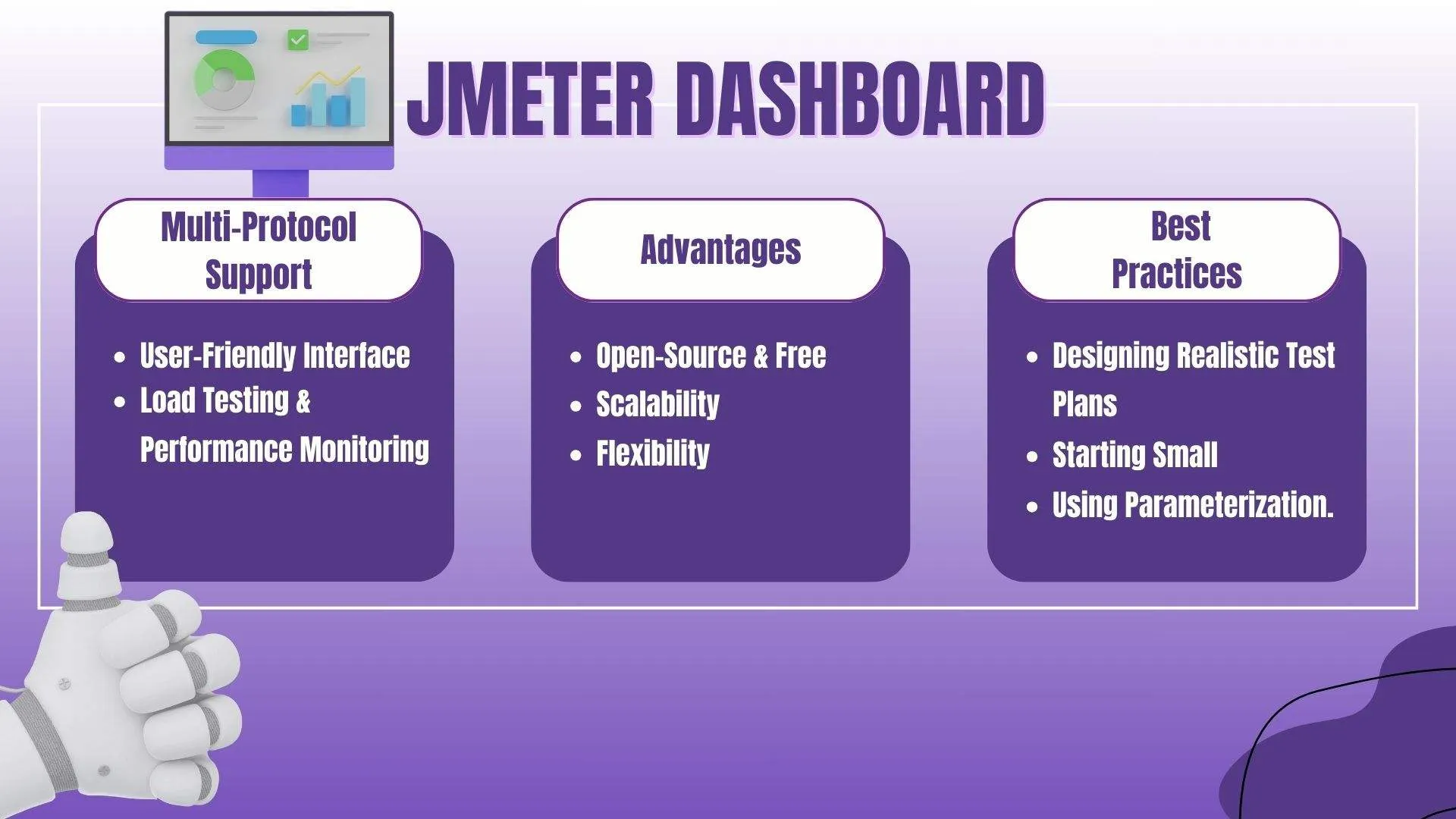
Comparing Open-Source vs. Commercial Load Testing Tools
When evaluating load testing tools, one of the key decisions teams must make is whether to use open-source or commercial solutions. Both types have their advantages and drawbacks, depending on the project’s scope, budget, and specific requirements.
Below, we’ll dive into the pros and cons of open-source and commercial load testing tools, using popular examples like Apache JMeter and Gatling (open-source) and LoadRunner and NeoLoad (commercial).
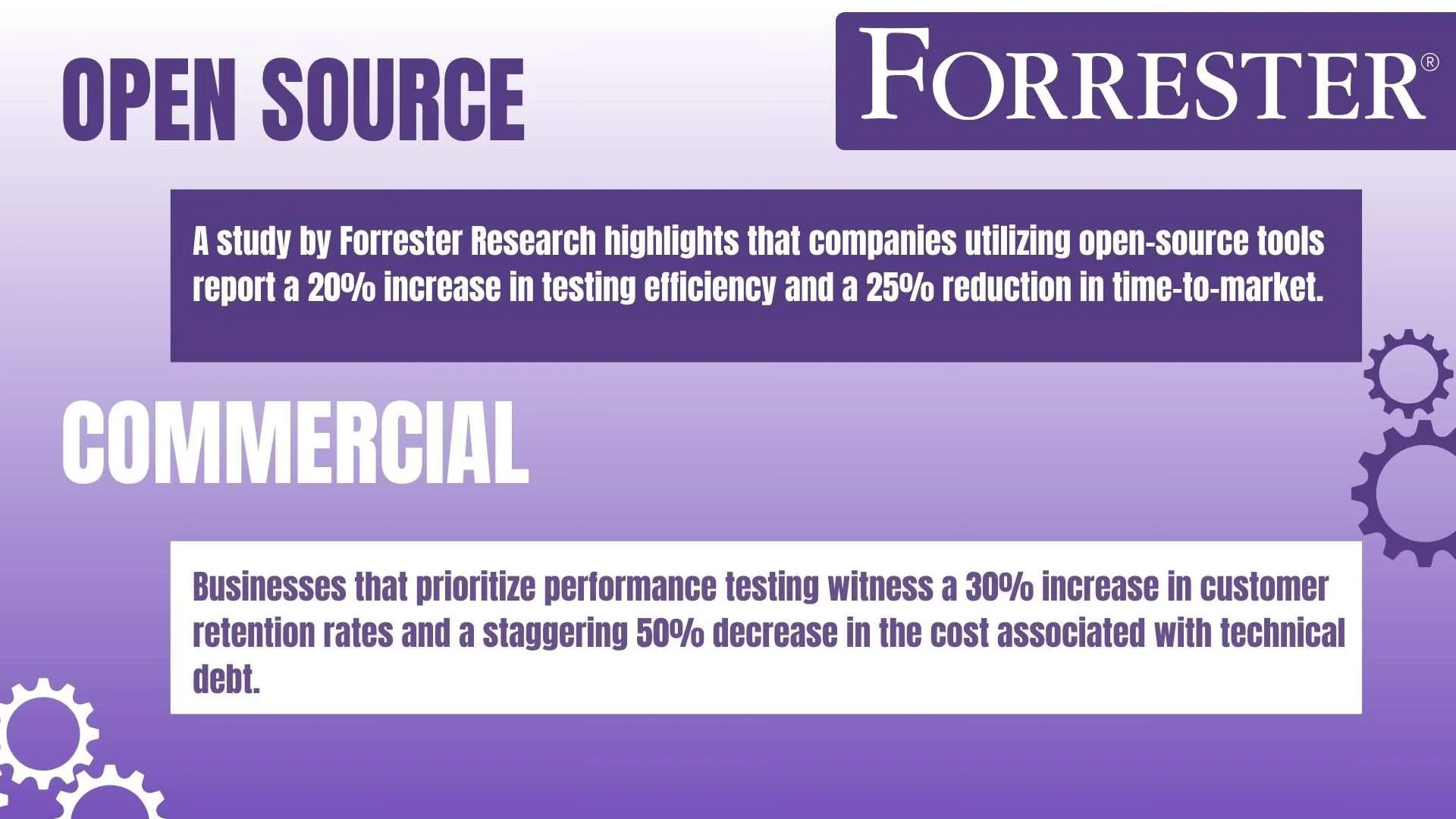
Best Practices for Effective Load Testing
To make the most of your chosen load testing tool, it's essential to follow best practices that ensure your tests are realistic, reliable, and actionable. Simulate virtual users to test application performance under varying loads. Consider the following key strategies:
1. Understand Your Load Scenarios
Before running any load tests, it's crucial to define your load scenarios based on real-world usage patterns. Identify the most common user journeys, peak usage times, and the number of concurrent users your application typically handles. This will help you create realistic test scenarios that mirror actual user behavior.
2. Gradually Increase Load
When running load tests, gradually increase the number of users or requests to simulate different levels of traffic. This approach, known as ramp-up testing, helps you identify the point at which your application starts to degrade. It also allows you to observe how your system behaves under increasing stress and pinpoint any performance bottlenecks. In JMeter, you can learn how to evenly distribute users in your test plan to make this process easier.
3. Monitor System Resources
During load testing, monitor your system's CPU, memory, disk, and network usage. High resource usage could point to bottlenecks that need to be resolved. Use monitoring tools in conjunction with your load testing tool to get a complete picture of your system's health under load.
4. Test Across Different Environments
It's essential to test your application in an environment that closely resembles your production setup. However, it's also useful to run load tests in different environments, such as staging or development, to identify potential issues early in the development cycle. Ensure that your test environment mirrors the production environment in terms of hardware, software, and network configurations.

Load Testing for Mobile Applications
Mobile applications are increasingly being used by millions of users worldwide. Load testing tools like NeoLoad and LoadRunner provide features tailored for mobile app testing, allowing you to simulate various network conditions, device types, and concurrent users.
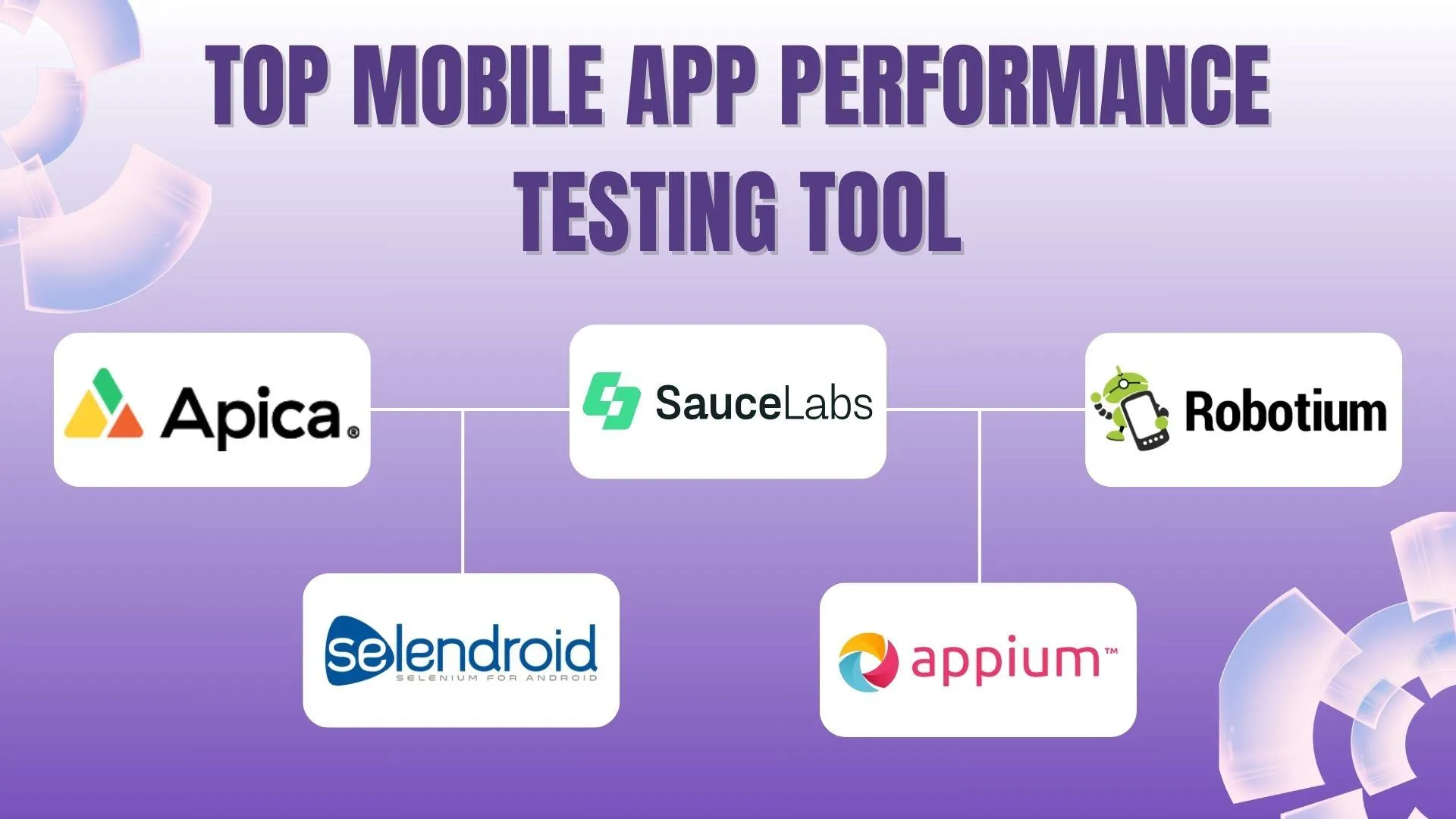
Key Performance Metrics to Track During Load Testing
During load testing, it’s essential to monitor key performance metrics to ensure your application can handle peak traffic. These include response time, throughput, error rate, and resource utilization. Monitoring these metrics provides insights into how well your system can scale and identify any bottlenecks that need to be addressed.
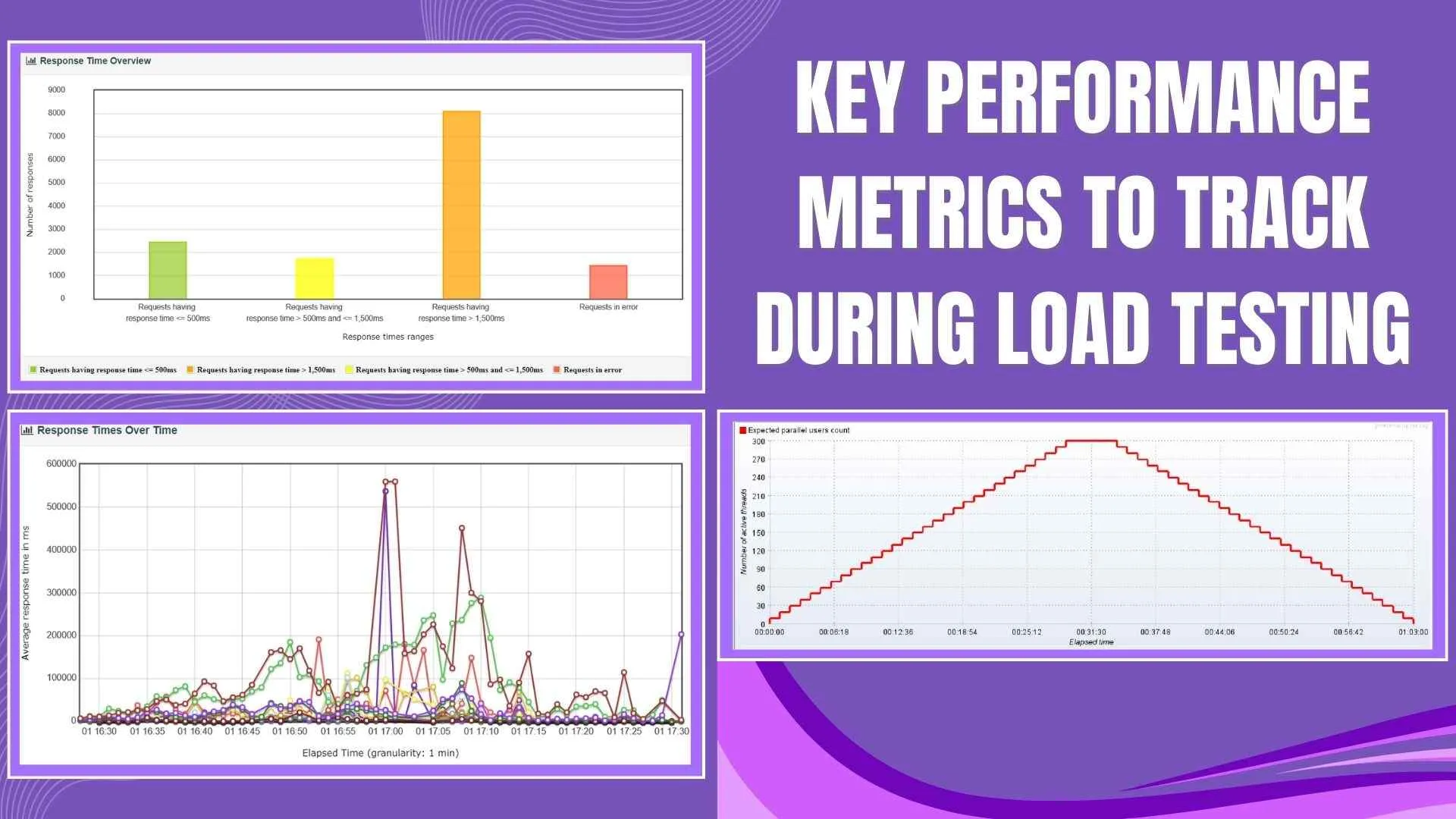
The Role of Cloud-Based Load Testing in 2024
As cloud computing becomes more prevalent, cloud-based load testing tools like BlazeMeter and LoadView are gaining popularity. These tools allow you to simulate large-scale user traffic from different regions, offering greater flexibility and scalability. Cloud-based testing offers scalable resources and global access for diverse testing needs.

Future Trends in Load Testing: What to Expect Beyond 2024
As technology continues to evolve, so will load testing practices. Complex testing scenarios require detailed simulations to uncover potential system issues. By staying ahead of these trends, businesses can ensure they are prepared for the future of performance testing.

Conclusion
Choosing the right load-testing tool for your needs depends on various factors, including the scale of your application, the protocols you need to test, and your integration requirements. Whether you're a developer looking for an easy-to-use tool or an enterprise seeking a comprehensive solution, the tools listed here offer a range of features to help you achieve optimal performance in 2024.
In the rapidly evolving landscape of mobile applications, the importance of robust performance testing cannot be overstated. Utilizing real devices under heavy load conditions, performance tests ensure that the app functions optimally across various network conditions and user scenarios. This type of testing, including functional tests and acceptance testing, is crucial for identifying potential bottlenecks that can impair user experience. Advanced features in testing tools, such as intuitive interfaces and scripting languages, enable DevOps teams to implement continuous performance testing. Additionally, cloud-based infrastructure supports cross-browser testing, allowing teams to assess how applications perform on different web browsers without the need for extensive physical setups. 🌐📱
Furthermore, comprehensive testing strategies encompass not just functional and performance testing, but also security testing to safeguard user data. Stress testing tools, particularly those that simulate extreme operational loads, are vital for understanding how applications behave under peak conditions. Source load testing tools, often equipped with a graphical interface, facilitate these tests by making them more accessible and manageable. By integrating these tools into their development processes, DevOps teams can ensure that their applications are not only efficient and resilient but also secure and compliant with the latest standards, thus enhancing overall software quality and user satisfaction. 🔒🚀🛡️
People also asked
👉 Which is best for load testing?
It depends on your project needs, budget, and technical expertise—e.g., LoadRunner for enterprise features, JMeter for cost-effectiveness, or k6 for ease of use.
👉 Which is better JMeter or LoadRunner?
LoadRunner offers more features and support, but JMeter is cost-effective and flexible.
👉 Is JMeter good for load testing?
Yes, JMeter is excellent for load testing, especially for web applications and APIs.
👉Which tool is better than JMeter?
Tools like LoadRunner or NeoLoad may be better for enterprise-grade testing.
👉How do you load test a website?
Use a load testing tool like JMeter or LoadRunner to simulate user traffic and measure performance.





%201.webp)

